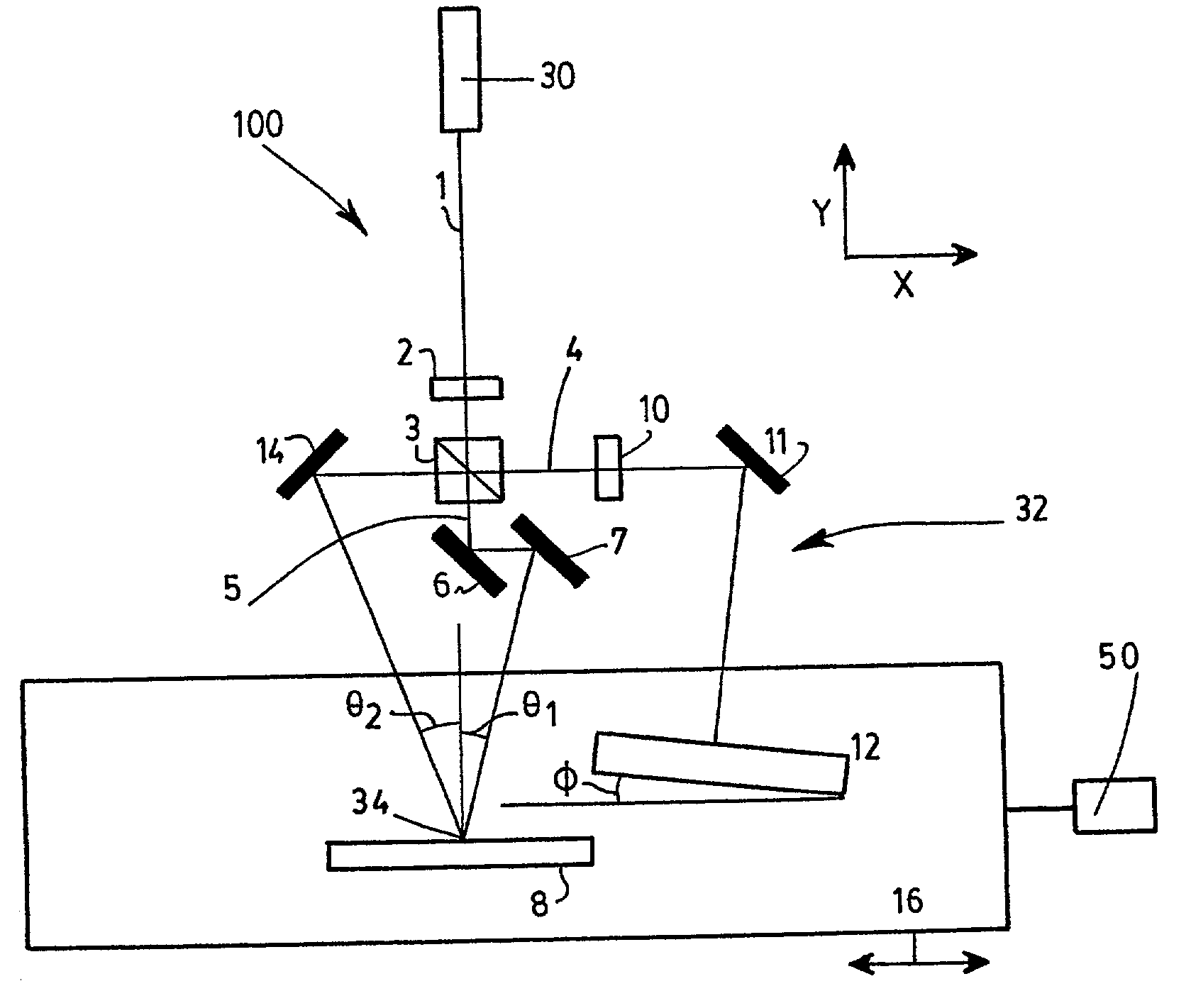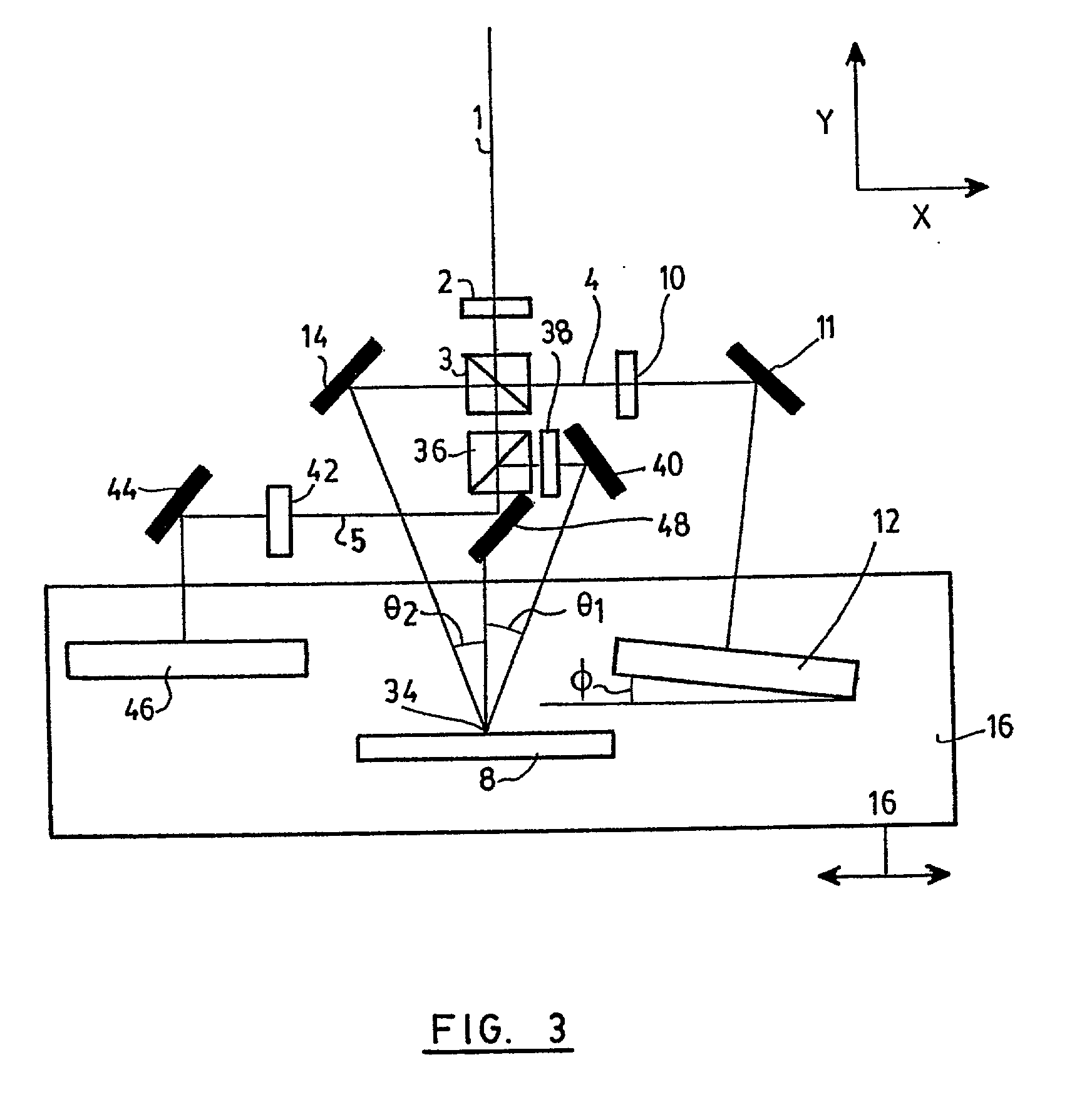System and method for recording interference fringes in a photosensitive medium
- Summary
- Abstract
- Description
- Claims
- Application Information
AI Technical Summary
Benefits of technology
Problems solved by technology
Method used
Image
Examples
first embodiment
[0021] With reference to FIG. 1, there is shown a system 100 for recording interference fringes in a photosensitive medium 8 according to the present invention. The photosensitive medium 8 is said to extend in a recording plane, which in the illustrated embodiments is defined as the x-z plane. The photosensitive medium may be made of any appropriate material such as optical fiber, photoresist, photopolymer, dichromated gelatin or photosensitive glass.
[0022] The interference fringes are preferably a sinusoidal variation of intensity defining a pattern having a period A calculated by: 1 = sin 1 - sin 2 ,
[0023] where .lambda. is the wavelength of the laser, .theta..sub.1 and .theta..sub.2 are respectively the angles of incidence of both beams 4 and 5 relative the normal of the recording plane (positive clockwise, negative counterclockwise).
[0024] The system 100 first includes light generating means for generating first and second coherent light beams 4 and 5. Preferably, a light source...
third embodiment
[0042] Referring to FIG. 4, there is shown the present invention similar to the embodiment of FIG. 3. In this new configuration, the stabilizing mirror 46 makes an angle .phi.' with the recording plane. The angle .phi.' is preferably the same as the angle .phi. of the delay mirror 12, but in an opposite direction to maximize the symmetry for both beam paths. In that case, the angles .phi. and .phi.' should both have a value of about half of the value of angle .phi. in the case where the stabilizing mirror 46 is parallel to the recording plane. In this configuration, the system becomes insensitive to a minor Y translation of the stage since both beams are affected in the same way. In addition, it is less sensitive to angular movement in the X-Y plane, since the first light beam 4 impinges on the recording plane by the left side while being reflected by the delay mirror 12 on the right side of the recording plane, while the second light beam 5 impinges on the recording plane by the ri...
PUM
 Login to View More
Login to View More Abstract
Description
Claims
Application Information
 Login to View More
Login to View More - R&D
- Intellectual Property
- Life Sciences
- Materials
- Tech Scout
- Unparalleled Data Quality
- Higher Quality Content
- 60% Fewer Hallucinations
Browse by: Latest US Patents, China's latest patents, Technical Efficacy Thesaurus, Application Domain, Technology Topic, Popular Technical Reports.
© 2025 PatSnap. All rights reserved.Legal|Privacy policy|Modern Slavery Act Transparency Statement|Sitemap|About US| Contact US: help@patsnap.com



